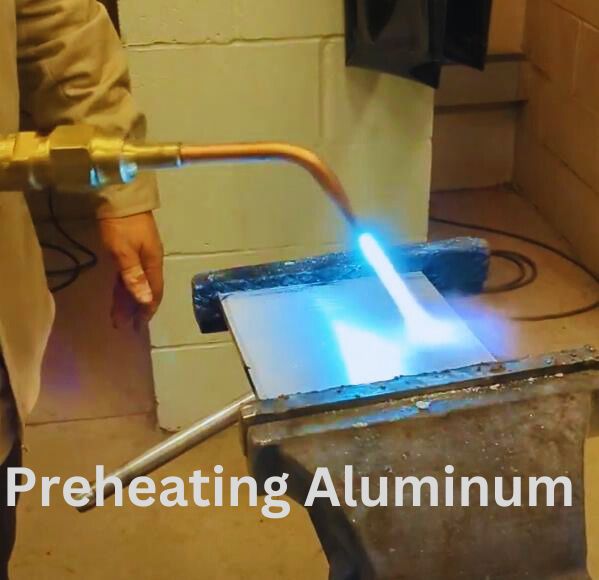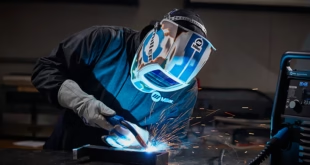How to Properly Preheat Aluminum
Aluminum welding can be a tricky process due to the metal’s unique properties, and preheating plays a vital role in overcoming some of the challenges welders face. Whether you’re a beginner or experienced in welding, understanding how to preheat aluminum properly is key to achieving clean, strong welds without defects. In this guide, we will walk you through the reasons for preheating, the ideal methods, temperature ranges, and tips for successful aluminum welding.
Why Preheating Aluminum is Important
Aluminum differs from steel and other metals in several ways, which makes preheating essential for certain applications. The high thermal conductivity of aluminum means it absorbs and spreads heat rapidly, causing a challenge when welding. Here’s why preheating matters:

Understanding Aluminum’s Properties
Aluminum conducts heat about five times faster than steel. This means that when you apply a heat source, such as during welding, the heat is quickly dispersed across the entire workpiece rather than remaining localized at the weld joint. While this property is beneficial in applications where heat dissipation is necessary, it can make welding challenging. Without proper preheating, you may struggle to maintain a consistent welding arc because the metal cools too quickly.
Effects of Temperature on Aluminum
Aluminum’s oxide layer, which forms naturally when exposed to air, melts at a much higher temperature than the metal itself. This oxide layer can act as a barrier during welding, preventing the filler metal from fusing properly with the base metal. Preheating helps to break down the oxide layer and ensures better weld penetration. Additionally, by heating the aluminum to a controlled temperature before welding, you reduce the risk of thermal stress that could lead to cracking or other defects.
Common Welding Challenges with Aluminum
Before we dive into how to preheat aluminum, it’s important to understand some of the common challenges associated with welding this metal:
Oxide Layer Issues
Aluminum naturally forms a tough oxide layer (aluminum oxide) when exposed to air. This layer has a significantly higher melting point (around 3,700°F or 2,037°C) compared to aluminum itself, which melts at 1,221°F (660°C). If this layer isn’t properly removed or addressed, it can create issues like incomplete fusion or poor penetration, leading to weak welds. Preheating can help by softening this oxide layer and making it easier to clean before welding.
High Thermal Conductivity
As mentioned earlier, aluminum’s high thermal conductivity means that it transfers heat away from the weld pool rapidly. This can cause the weld area to cool too quickly, resulting in incomplete fusion or the formation of cold cracks. Preheating reduces this effect by bringing the entire workpiece to a uniform temperature, which helps the weld area stay hotter for longer.
Cracking and Warping
When welding without preheating, the rapid expansion and contraction of aluminum can cause cracking or warping, especially in thicker materials or in joints prone to stress. Preheating helps mitigate this risk by allowing the metal to expand more evenly during welding, reducing the chances of distortion.
When to Preheat Aluminum
Preheating aluminum isn’t always necessary, but there are certain situations where it can significantly improve the welding outcome. Knowing when to preheat can save you time, effort, and the risk of having to redo a faulty weld.
Thickness of Material
Preheating becomes more important as the thickness of the aluminum increases. Aluminum pieces over ½ inch (12.7 mm) thick are often recommended for preheating. This is because thicker materials have more mass and will draw heat away from the weld area much more quickly than thinner pieces. By preheating thicker sections, you ensure that the weld remains hot enough to achieve full penetration and fusion.
Types of Joints
Certain joint types are more susceptible to cracking and may benefit from preheating. For example, T-joints and butt joints in thicker aluminum pieces tend to experience higher thermal stresses during welding. Preheating these types of joints can reduce the chances of cracking by allowing the metal to expand and contract more evenly.
Specific Welding Processes
Not all welding processes require preheating, but in processes like TIG (Tungsten Inert Gas) or MIG (Metal Inert Gas) welding, preheating can be beneficial. These processes rely on heat input to form strong welds, and preheating can help maintain the desired temperature during the process, ensuring that the weld penetrates deeply and evenly.
Ideal Preheat Temperature for Aluminum
The correct preheat temperature is critical. Heating the metal too little can leave you with the same challenges we’ve discussed, but overheating can lead to distortion, poor mechanical properties, or burn-through.
Recommended Temperature Ranges
For most aluminum alloys, the ideal preheat temperature is between 250°F to 300°F (120°C to 150°C). This range allows for sufficient preheating without overheating the material. Preheating aluminum to temperatures below 250°F might not offer enough benefit in terms of reducing cracking, while heating it above 300°F could lead to unwanted changes in the metal’s microstructure or warping.
Factors Affecting Preheat Temperature
The ideal preheat temperature can vary based on the specific aluminum alloy you’re working with, the thickness of the material, and environmental factors such as ambient temperature. Some alloys, like 6000 series, are more prone to cracking and may benefit from preheating, while others, like 5000 series, might not need as much heat.
Methods of Preheating Aluminum
Several methods can be used to preheat aluminum, each with its advantages depending on the size of the project and the tools available.
Torch Heating
Torch heating involves using a gas torch (typically an oxy-acetylene or propane torch) to apply direct heat to the aluminum. This method is most suitable for smaller pieces or specific areas that need localized preheating. When using a torch, it’s important to apply the heat gradually and move the torch in a consistent motion to avoid overheating one spot.
Furnace Heating
For larger workpieces or batch operations, furnace heating may be a better option. In this method, the entire piece of aluminum is placed in a furnace where it can be heated evenly. Furnace heating is ideal for projects requiring consistent, uniform heat across the whole workpiece. However, it may not be practical for smaller jobs or fieldwork.
Induction Heating
Induction heating is a fast and efficient method that uses electromagnetic fields to heat the aluminum. This method allows for precise temperature control and is commonly used in industrial settings where large volumes of aluminum need to be preheated. Induction heating offers the benefit of being highly efficient and energy-saving compared to traditional torch or furnace methods.
How to Measure Preheat Temperature Accurately
Measuring the temperature of aluminum accurately during preheating is essential to ensure that you’re not under or overheating the material. Here are some of the tools and techniques you can use:
Using Temperature-Indicating Crayons
Temperature-indicating crayons, also known as Tempilstiks, are a quick and cost-effective way to monitor the temperature of your workpiece. These crayons are applied to the surface of the metal, and they melt when the desired temperature is reached. This provides an easy visual cue for welders.
Infrared Thermometers
Infrared thermometers allow you to measure the surface temperature of aluminum without making contact. This method is ideal for checking the temperature at multiple points across the workpiece, especially in larger projects. However, infrared thermometers can be less accurate on reflective surfaces like aluminum, so you may need to calibrate them or use them in conjunction with other methods.
Contact Thermometers
For the most precise temperature measurement, a contact thermometer can be used. These devices require direct contact with the aluminum surface and provide accurate, real-time readings. While more reliable than infrared thermometers, they can be slower to use, especially if you need to check multiple spots.
Steps to Properly Preheat Aluminum
To ensure a successful weld, follow these steps when preheating aluminum:
Step 1: Preparing the Aluminum Surface
Before applying heat, make sure the aluminum surface is clean. Any oils, grease, dirt, or oxides present on the surface can interfere with the weld and reduce its quality. Use a stainless steel brush, acetone, or an aluminum-specific cleaning solution to prepare the surface. Cleaning is particularly important because aluminum oxides have a much higher melting point than the aluminum itself.
Step 2: Applying Heat Evenly
When preheating aluminum, it’s important to apply the heat gradually and evenly across the weld area. Uneven heating can cause warping or localized overheating. If using a torch, move it in a sweeping or circular motion over the weld area to distribute the heat evenly. For furnace or induction heating, make sure the entire piece reaches the desired temperature.
Step 3: Monitoring Temperature
Throughout the preheating process, use one of the temperature measurement methods discussed earlier to ensure the aluminum is at the correct temperature. Check the temperature at several points along the workpiece, especially in areas that will be subjected to welding, to confirm that the heat is evenly distributed.
Tips for Successful Aluminum Welding
Beyond preheating, there are additional tips to ensure a successful weld on aluminum:
Avoid Overheating
Overheating aluminum can lead to distortion or burn-through, which compromises the integrity of the weld. Stick to the recommended preheat temperature ranges and monitor the metal carefully during the welding process to avoid excessive heat input.
Control Cooling Rates
After welding, allow the aluminum to cool gradually. Rapid cooling can introduce stress into the material, which may cause cracking or other defects. Avoid using forced cooling methods like fans or water to prevent these issues.
Use the Right Filler Material
Choosing the correct filler material for aluminum welding is essential for preventing issues like cracking or weak joints. The filler material should be compatible with the aluminum alloy you are working with. For example, the 4043 filler wire is commonly used for welding 6000 series aluminum alloys.
FAQs
Can you weld aluminum without preheating?
Yes, for thinner materials or certain welding processes, preheating may not be necessary. However, preheating is recommended for thicker materials or joints prone to cracking to ensure better weld penetration and reduce defects.
What happens if you overheat aluminum during welding?
Overheating can cause warping, distortion, or even burn through the aluminum, leading to weak joints and a poor-quality weld. Always monitor the temperature to avoid overheating.
How do you know if aluminum needs to be preheated?
Consider the thickness of the material, the type of joint, and the welding process being used. For materials over ½ inch thick or in cases where cracking is a concern, preheating is typically recommended.
Can preheating aluminum prevent cracks?
Yes, preheating reduces thermal stress by allowing the metal to expand and contract more evenly during welding, which significantly lowers the risk of cracking.
What is the best preheating method for aluminum welding?
The best method depends on the project size and tools available. For small, localized work, torch heating is effective, while larger projects might benefit from furnace or induction heating for more uniform heat distribution.
Conclusion
Preheating aluminum is a critical step that can greatly improve the quality of your welds, particularly when dealing with thick materials, complex joints, or certain welding processes. By understanding the importance of preheating, choosing the right method, and carefully monitoring the temperature, you can ensure better weld penetration, reduced defects, and stronger welds. Whether you’re working on small repairs or large-scale industrial applications, mastering the art of preheating aluminum will help you achieve more consistent and reliable results.
 Welding of Welders All about Welding and Welders
Welding of Welders All about Welding and Welders



